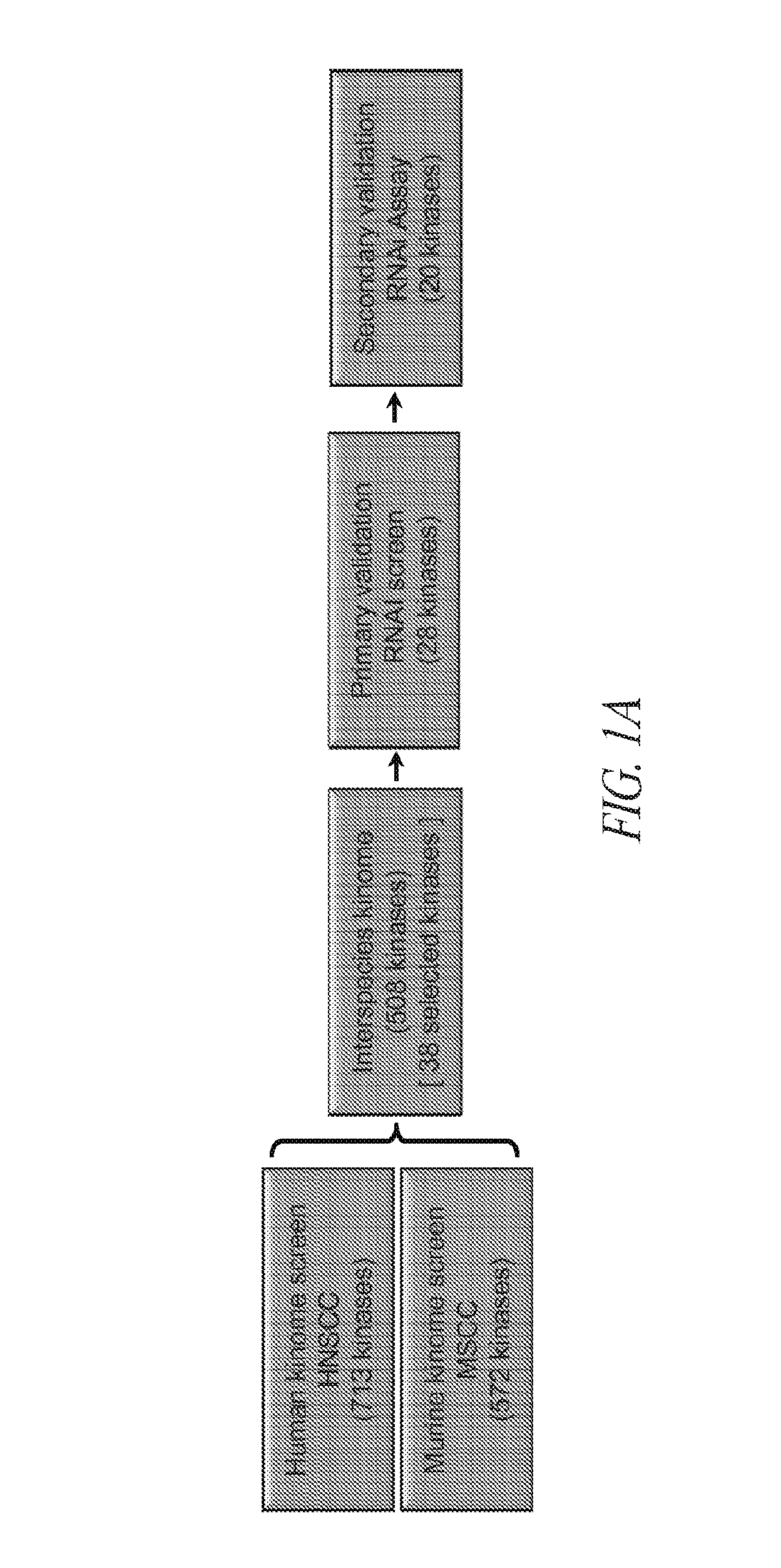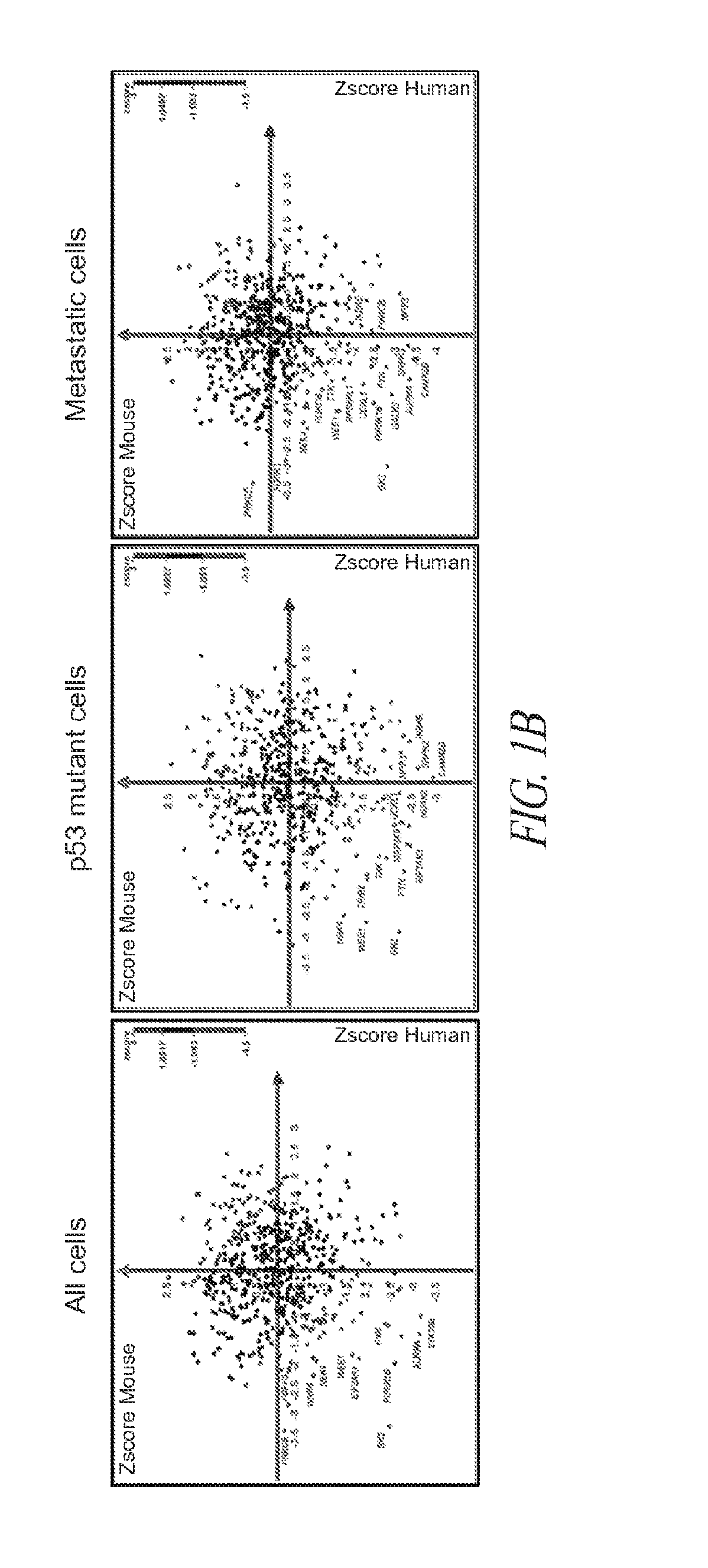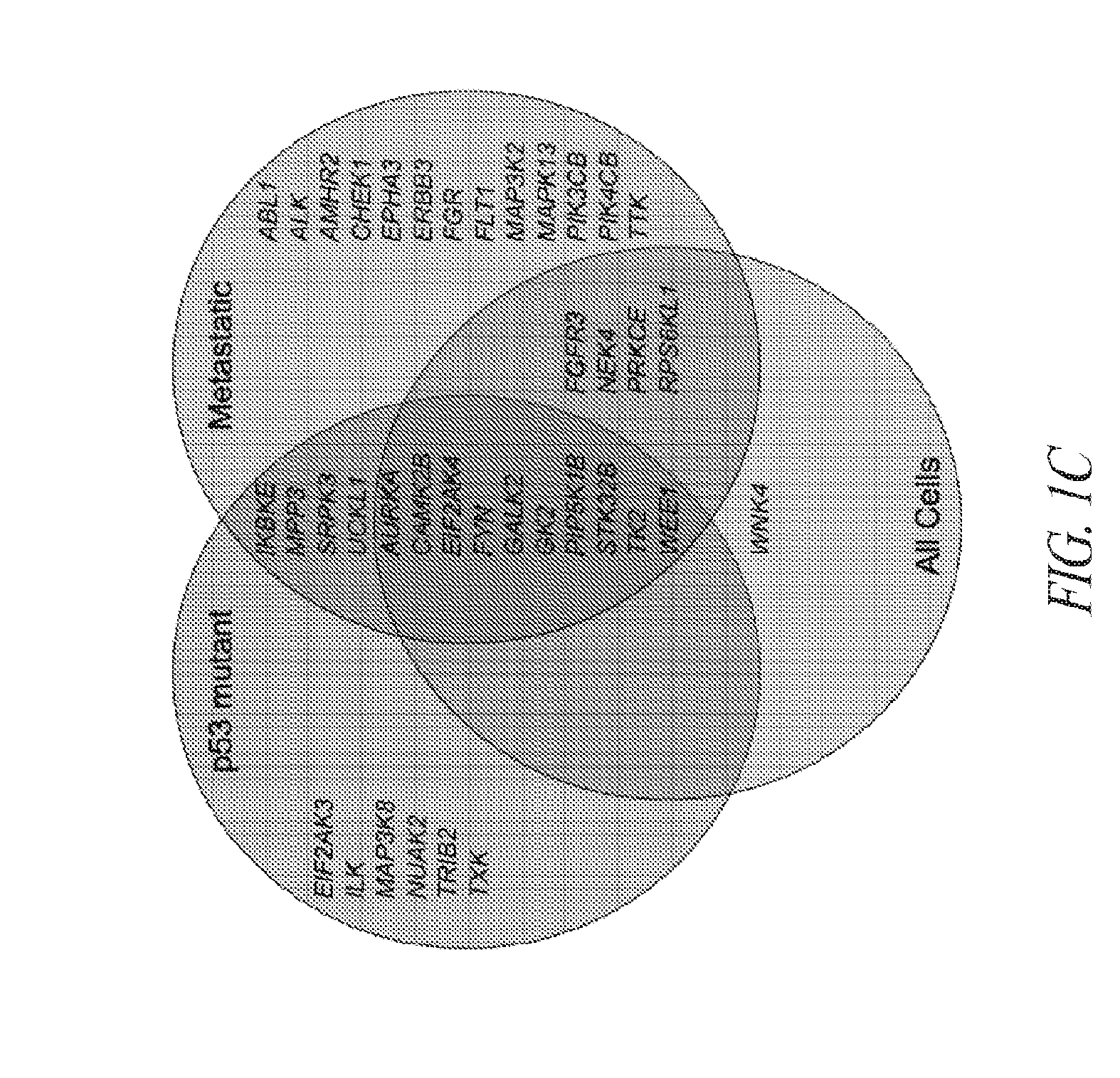Methods for identifying therapeutic targets and treating monitoring cancers
a technology for monitoring cancer and therapeutic targets, applied in the field of cancer treatment, can solve the problems of tumor recurrence, limited palliative care options for those who do not respond, and toxicities limiting their effectiveness
- Summary
- Abstract
- Description
- Claims
- Application Information
AI Technical Summary
Benefits of technology
Problems solved by technology
Method used
Image
Examples
example 1
Identification of Therapeutic Drug Targets for p53 Mutant Head and Neck Squamous Cell Carcinoma
[0119]Briefly, and as described in more detail below, RNAi kinome viability screens were performed on HNSCC cells including autologous pairs from primary tumor and recurrent / metastatic lesions, and in parallel on murine squamous cell carcinoma (MSCC) cells derived from tumors of inbred mice bearing germline mutations in Trp53, and p53 regulatory genes: Atm, Prkdc, and p19Arf. Cross-species analysis of cell lines stratified by p53 mutational status and metastatic phenotype was utilized to select 38 kinase targets. Both primary and secondary RNAi validation assays were performed on additional HNSCC cell lines to credential these kinase targets utilizing multiple phenotypic endpoints. Kinase targets were also examined via chemical inhibition utilizing a panel of kinase inhibitors. A preclinical study was conducted on the WEE1 kinase inhibitor, MK-1775.
[0120]This functional kinomics approach i...
example 2
Validation of Therapeutic Drug Targets for Tumor Suppressor Mutant Cancers in Human Patients
[0164]To confirm the kinases identified in Example 1 as therapeutic drug targets in human cancers, we performed large scale siRNA screens, using primary tumor cell cultures obtained from patients with a mutation in a tumor suppressor gene. These studies validated kinases identified in Example 1 as therapeutic candidates in primary human tumors. Certain screens were performed using siRNAs to 6,650 genes considered druggable, i.e., the “druggable genome.” One screen was performed using a custom designed siRNA library (1302 genes) that included the human kinome (713 genes), DNA damage and repair genes (318 genes), and a Kemp Pancreatic Oncolibrary that includes apoptotic and autophagic genes (96 genes), pancreatic-specific biomarkers (81 genes) (Harsha et al., 2009), pancreatic-specific extracellular / membrane associated genes from serial analysis of gene expression (44 genes) (Jones et al., 2008...
PUM
| Property | Measurement | Unit |
|---|---|---|
| Biological properties | aaaaa | aaaaa |
| Therapeutic | aaaaa | aaaaa |
Abstract
Description
Claims
Application Information
 Login to View More
Login to View More - R&D
- Intellectual Property
- Life Sciences
- Materials
- Tech Scout
- Unparalleled Data Quality
- Higher Quality Content
- 60% Fewer Hallucinations
Browse by: Latest US Patents, China's latest patents, Technical Efficacy Thesaurus, Application Domain, Technology Topic, Popular Technical Reports.
© 2025 PatSnap. All rights reserved.Legal|Privacy policy|Modern Slavery Act Transparency Statement|Sitemap|About US| Contact US: help@patsnap.com



